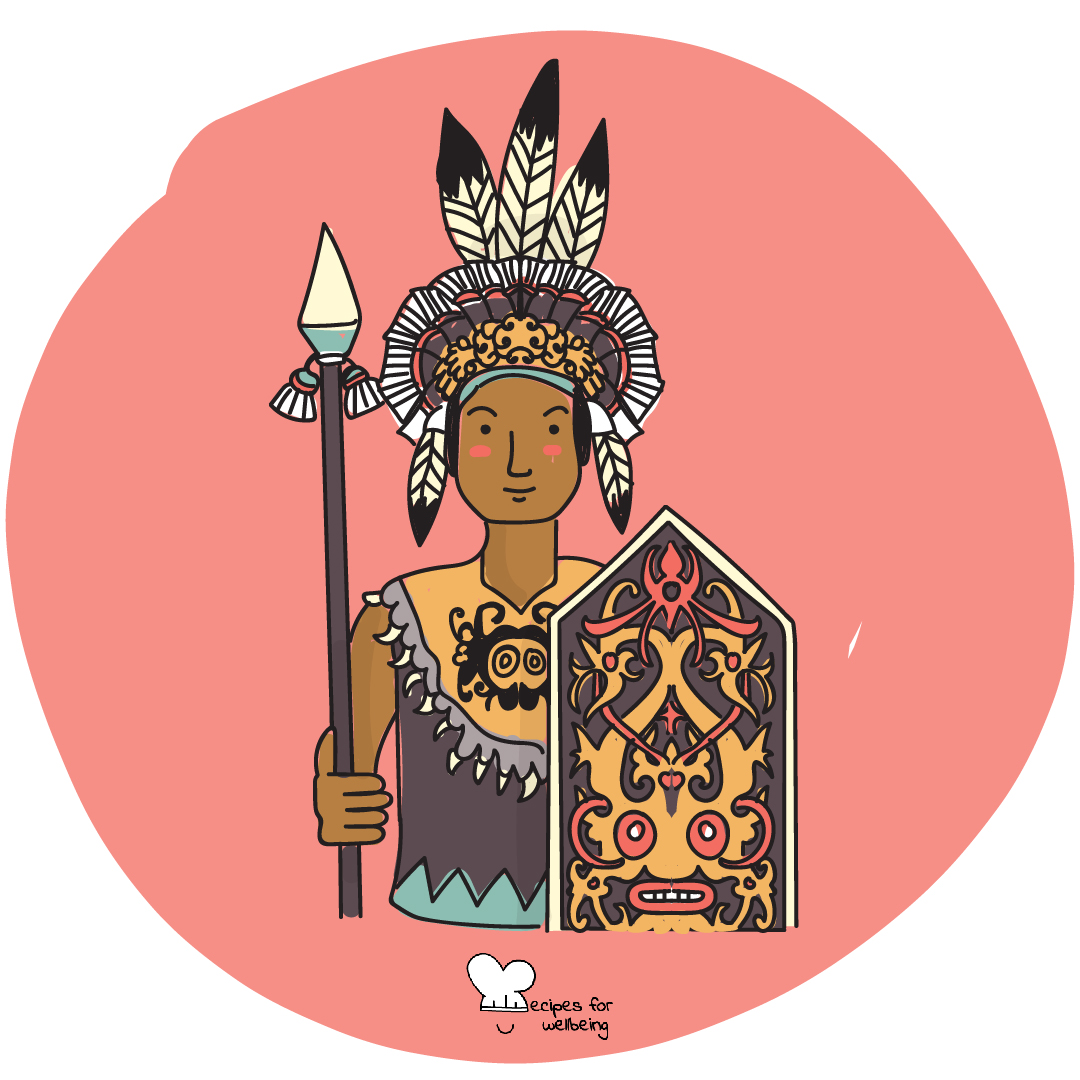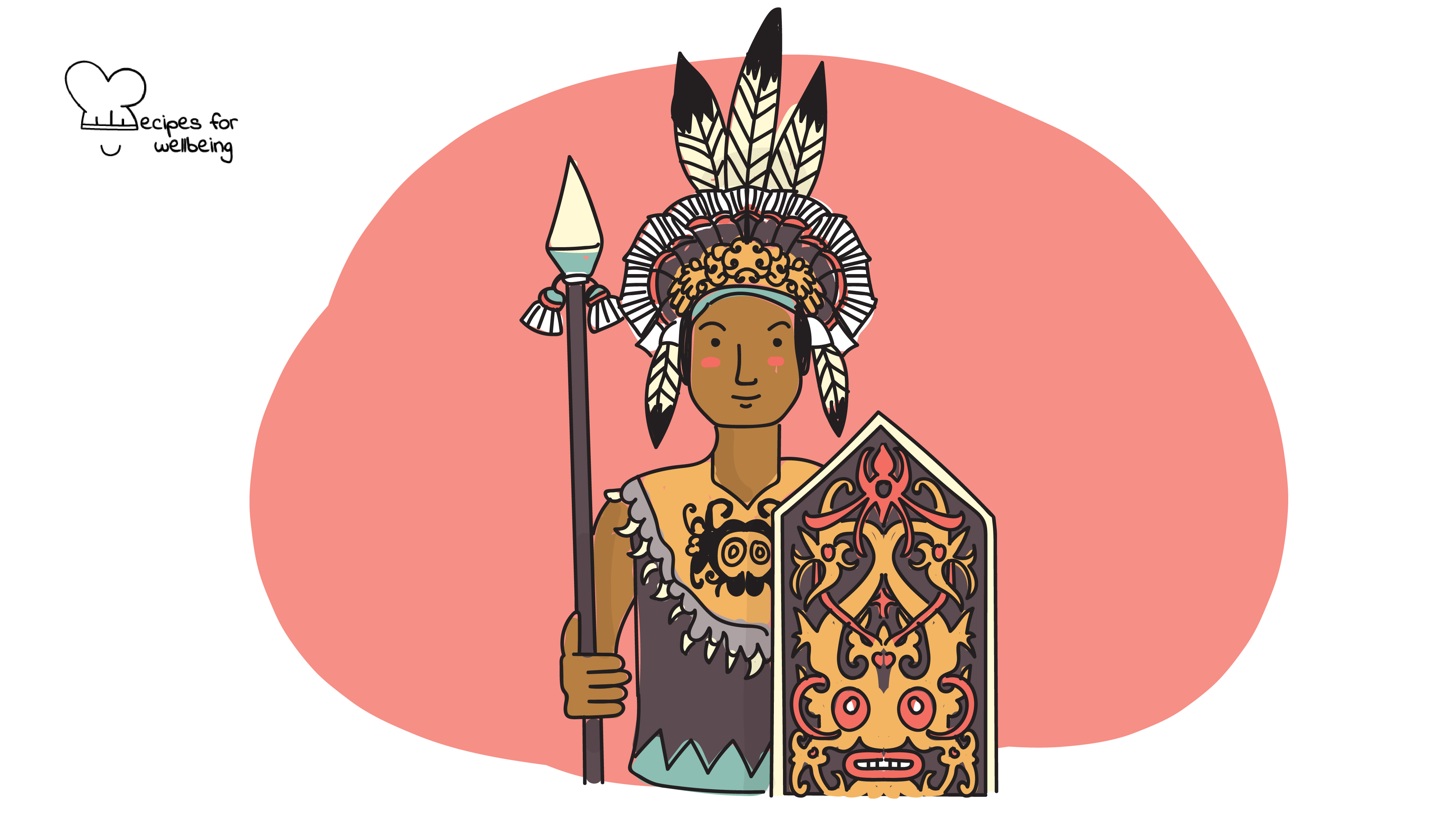
Creating Biocultural Community Protocols
Individually, we are one drop. Together, we are an ocean. —Ryunosuke Satoro
👥 Serves: 26-40 people, 41+ people
🎚 Difficulty: Hard
⏳ Total time: Ongoing
🥣 Ingredients: Pen, paper, workshop location
🤓 Wholebeing Domains: Bioempathy, Community
💪 Wholebeing Skills: Allyship, Bioinspiration, Collaboration, Ecosystem harmony, Hosting conversations, Non-extracting, Reciprocity

Creating Biocultural Community Protocols
📝 Description
Biocultural community protocol(s) for external agencies to engage with indigenous and local communities.
Many changemakers have grown up with the well-intentioned, albeit overused, Golden Rule: “Do unto others as you would have them do unto you.” What would happen if we flip the Golden Rule to: “do unto others as they would have done unto themselves?”
For too long the voices of our most diverse thinkers have been side-lined due to a complicated world of “white savours” and “we know what’s best” mindset. Minority communities are vastly underrepresented in the political sphere in the majority of countries around the world. What’s more, when they can participate in the arena, they are often outvoted when it comes to issues that are sensitive to their specific needs.
As community leaders and changemakers in this world, we hold responsibility when creating new ideas, programmes, or movements that will serve the wider community and population, to be inclusive of everyone, and ensure our work is truly by and for, led by the community we wish to support.
This is where this recipe is imperative for creating inclusive Biocultural Community Protocols. Broadly, Biocultural Community Protocols are documents designed to set out expectations on how communities will work with external organisations. Community protocols can address any number of community issues including spiritual, social, and material. No protocols will be the same, due to the varied and diverse peoples who develop them.
This is to say that Indigenous peoples and local communities are rooted and connected to their land, which forms their deep ties and foundation of their identities, cultures, languages, and traditions. This extends to decades of existing intricate self-governance and self-management established by unique laws, values, and beliefs.
In an attempt to work together, learn from one another and grow, local communities have been working with external agencies such as the government, companies, non-governmental organisations, charities, conservation organisations, etc. to highlight individual priorities. Sometimes these are led concerning the culture and roots of the groups. Yet, they are often still led by the external agencies, defined, and governed by rules that work for them – not the local peoples. As such, the response is not always positive or open.
Creating Biocultural Community Protocols, done with/by the local people or by allied/supportive organisations, is a powerful tool for communities to advocate their priorities through a positive assertion of their rights in response to any challenges. The protocols can help others appreciate, respect, and understand the ways of the life of Indigenous and local peoples. To summarise: do unto others as they would have done unto themselves.
This recipe has been adapted from the work of Natural Justice and their toolkit entitled: Biocultural Community Protocols: A Toolkit for Community Facilitators Integrated Participatory and Legal Empowerment Tools to Support Communities to Secure their Rights, Responsibilities, Territories, and Areas, by our wellbeing content writer collaborator Marissa Del Mistro.
👣 Steps
Step 1 – Understand the community
How do you define community? It can be complicated! This is because a community is not restricted simply by the geographical areas of a village, suburb, settlement, borough, or district. Rather, a community is often defined as people who are brought together by similarities and commonalities – which can encompass many things such as lifestyle, sexuality, religion, interests, traditions, or resources.
To get to know the community you will be working with on a much deeper level, there is a number of questions to uncover and answer, including, but not limited to:
- What are the community’s spiritual, cultural, and ecological norms?
- What is the community’s traditional knowledge that ensures the conservation of biological diversity?
- How will you communicate with the community? Do they have a trusted interpreter, if applicable?
- How is knowledge shared among and between members of the community?
- What are the local challenges?
- How would the community define informed consent to access their lands/resources or traditional knowledge?
- What are their rights/human rights according to national and international law?
- What are their governances and laws that they follow?
- What is the community’s spiritual understanding of nature/laws/music/etc?
- What makes the community feel most safe?
- Are there any specific community triggers or any topics/words/sayings to avoid?
It is then important to access literature and knowledge from existing information and ensure this is accurate and true from actors within the community. You can also obtain valid information from additional key actors involved in the community like institutions, NGOs, community members, researchers, governments, etc.
At this stage, research regarding all/any national, international laws and bylaws that support the customary rights and community priorities is identified. This will likely require legal experts and may take significant time if such research does not yet exist and may require time/work to simplify the legal language to make it as accessible as possible.
Before getting any further, it will be imperative to get the informed consent of the community that they are on board and willing to be involved.
Step 2 – Determine the ideal ‘community catalyst’ and protocol facilitator
A community catalyst is an imperative part of this recipe. This is someone who has great influence and is well known in the community you are working with. They are willing to take on the job of communicating with the local people through additional workshops and completing any other work such as speaking to the media, working with schools and more.
When determining who would be the ideal community catalyst, there may be someone who is an obvious choice – but not always. If it was not obvious, engage as many diverse groups within the community including womxn, young people, and seniors.
The perfect candidate may be shy, but excited by the chance, so one might need some encouragement for their potential. Always work closely with the community to identify who would fit into this role best.
Factors to consider when thinking of a community catalyst:
- Who is/has potential?
- What skills, resources, and talents do they have?
- What skills, resources, and assets would they like to learn or gain?
- How/will the broader community support them?
- What boundaries, if any, need to be addressed regarding communication?
Being a facilitator is as exciting as it is a big responsibility. It is up to the facilitator to remain positive, be patient, adaptable, consistent, approachable, easy to understand, gentle yet firm, and to keep the momentum going.
Before the sessions, the facilitator will need to do prep work as the groundwork for a successful workshop. This includes, but is not limited to:
- Create an agenda.
- Determine the key points of discussion.
- Create the invitation list remembering that adequate groups in the community should be included for adequate representation.
- Ensure your location and plan is accessible and inclusive. Consider the layout, space, translators/interpreters, accessibility measures, childcare, food and refreshments, enough equipment, etc.
During the sessions, it will be the responsibility of the facilitator to manage the expectations of the community, and all involved. It will be imperative to keep things on track while helping everyone involved explore questions, be motivated, and positive.
Step 3 – Appraisal and obtaining further information
Additional research and consultation to deeply understand the community, its bioresources, customary laws, and institutions including customs on the use of natural resources will need to be completed. This will likely be a time-consuming process and should ideally be conducted and facilitated by the community itself and the community catalyst. At this stage, the information and research can be analysed and validated with experts at the local level.
Step 4 – Community consultations
In line with the facilitator and community catalyst, it will be time to run a community consultation, with internal discussions among the community to develop the content of the protocol on cultural values, the roles and responsibilities of communities, customary laws, and resource rights.
The space needs to be one of trust, respect, and one where everyone is confident, safe to reflect, share and learn. It should be a space that is accessible, to engage as many community members as possible, and of course, sub-sections of the community. The focus is to place value on diversity, knowledge, and brilliance everyone can bring forth.
There will, likely, need to be many meetings, consultations, and discussions – it is impossible to put a time frame on it or how many sessions will work or not work. This will all be determined by the community.
Step 5 – The Community Biocultural Protocol
Now it is time to start drafting the protocol. This should be made available in the local language (including speakers such as local school teachers, local arbitrators or district-based lawyers from the community may be required to draft the protocol).
There will need to be an inclusive review stage, whereby the members of the community are invited to review the draft of the protocol to make any suggestions and adjustments or voice their concerns. When the final draft is complete, it can be then digitised, if necessary, and given to the community for ownership.
The protocol can be useful for negotiation with others, either individually or in multi-stakeholder platforms where community representatives engage with formal and state-level stakeholders or external parties.
Here are some positive examples of these protocols for inspiration:
- In Bushbuckridge, South Africa, Biocultural Community Protocols aided traditional Kukula health practitioners to access specific medicinal plants from a protected area they had been previously excluded from accessing.
- In Pakistan, India, and Kenya, BCPs have improved recognition of the importance of livestock keepers’ way of life.
- Gnanawathie from Theresa village in Moneragal district said that becoming a trainer (as part of the community catalyst) was the most significant change in her life.
- In Ghana, the Tanchara Biocultural Community Protocols postponed mining until 2013 to protect sacred groves.

